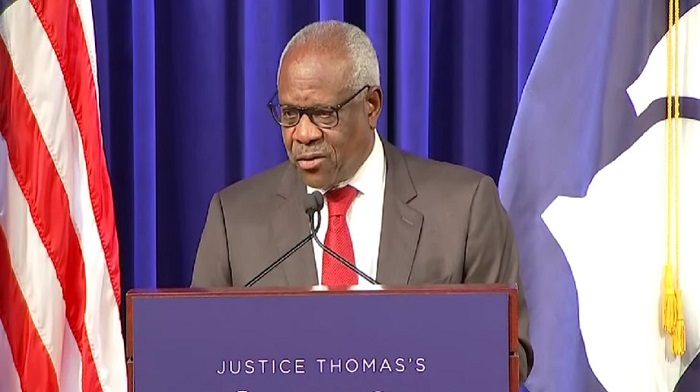Campaigners at COP26 in Glasgow in November 2021 ANDY BUCHANAN/AFP via Getty Images
Sebastian Mernild’s presentation pulled no punches. As more than 40 countries met in Copenhagen last week to discuss progress since 2021’s COP26 climate summit, the University of Southern Denmark glaciologist greeted ministers with jagged red lines showing rising global temperatures. He reminded them that emissions are still growing. And he told them their goal of holding temperature rises to 1.5°C needs nothing less than “rapid, deep and sustained” emissions cuts.
“They all know what we are facing scientifically regarding 1.5°C,” says Mernild. Whether they are acting on that knowledge is another question. Half a year on from a deal at COP26 in Glasgow, it is far from clear if countries are delivering on the commitments they made.
COP26 president Alok Sharma said today that failure by world leaders to deliver on their pledges would be a “monstrous act of self-harm”. Speaking in Glasgow, he said he could understand why action to cut emissions had been pushed out of the spotlight by the war in Ukraine and the cost-of-living crisis, but reminded his audience that “climate change is a chronic danger” the world couldn’t ignore.
Sharma added that Russia’s invasion had shown that “climate security is energy security, and we must break our dependency on fossil fuels”.
One of the headline promises of the Glasgow Climate Pact was that this year, 196 countries would “revisit and strengthen” their plans for curbing emissions by 2030. Without stronger action plans, the target of keeping below 1.5°C of warming will be out of reach.
Sharma said that the UK government is looking at ways to strengthen its 2030 national climate plan, but to date, no countries have formally submitted a blueprint that goes further than what they promised before or at COP26.
Those close to the UN climate talks process say that it is unlikely any action will be seen on those plans until much closer to the next big climate summit in November, COP27. That is being held in Sharm El-Sheikh, Egypt, raising expectations that at least the host nation will cough up a new plan. Beyond that, figures in climate diplomacy think the best that can be hoped for in revised plans are tougher emissions targets for individual sectors, such as forests or cars, rather than more sweeping targets.
Pete Betts at the London School of Economics, a former lead climate negotiator for the European Union and the UK, says large, developed economies had already set ambitious targets ahead of COP26. The US promised to cut emissions in half by 2030. But none of the big emerging economies, with the exception of South Africa, made significant moves.
“I’m afraid it was pretty clear in Glasgow that we were unlikely to see these revisions [to climate plans in 2022]. Because if they were going do it, they would have done it in Glasgow. All the signals are that it’s not going to happen in Sharm El-Sheikh, unfortunately,” says Betts. There is no sign that Egypt is putting pressure on other countries to raise their ambitions, as the UK did ahead of COP26.
“I see very little political energy being put into that right now,” says Carne Ross of the think tank E3G, referring to the likelihood of tougher climate plans. “I think the big issue on the climate front at the moment is Ukraine. It’s really stealing all the political attention away from everything else,” says Ross.
The US special envoy on climate change, John Kerry, said last week the invasion is no excuse for reneging on climate action, for example by building coal plants. “The key thing is not to give in to this notion that, ‘oh, Ukraine has changed everything, and so we will be building out infrastructure that we decided a little while ago that we can’t do now’,” he said.
One bright spot this year is that the new German government, which was formed by a coalition including the country’s Green party, is using its presidency of the G20 group of leading world economies to push for continued action on climate change. Another potential positive is that Australia and Brazil could elect governments that produce bold new plans. “I think that’s the hope,” says Ross.
There has also been some progress made on talks promised at COP26 on “loss and damage”, a potential first step towards rich countries compensating poorer ones for the impacts of climate, says Saleemul Huq at the International Centre for Climate Change and Development in Dhaka, Bangladesh.
The news is worse on other pledges made in Glasgow. Nearly 200 countries promised to embark on “phasing down coal”. Coal production is forecast to increase in China and the US this year. And India has relaxed environment rules to ramp up coal mining, to cope with power demand amid a heatwave that has been fuelled by climate change and the burning of coal.
There is little progress either on a series of flashy “side deals” made at COP26, including more than 100 countries pledging to halt deforestation by 2030. Brazil, one of the signatories to that, saw Amazon deforestation in April at the worst level since 2016, according to satellite images. “Illegal loggers and land grabbers are taking advantage of the last year of the current government,” says André Freitas of Greenpeace Brazil.
COP27 is less than six months away, but it hasn’t got an official website yet. Jim Skea of the Intergovernmental Panel on Climate Change recently said the 1.5°C goal will be “gone” if stronger national climate plans don’t materialise by the time thousands of delegates descend on Sharm El-Sheikh. Despite the resort’s sunny reputation, that is looking an increasingly gloomy prospect.
Sign up to our free Fix the Planet newsletter to get a dose of climate optimism delivered straight to your inbox, every Thursday
More on these topics:

























































